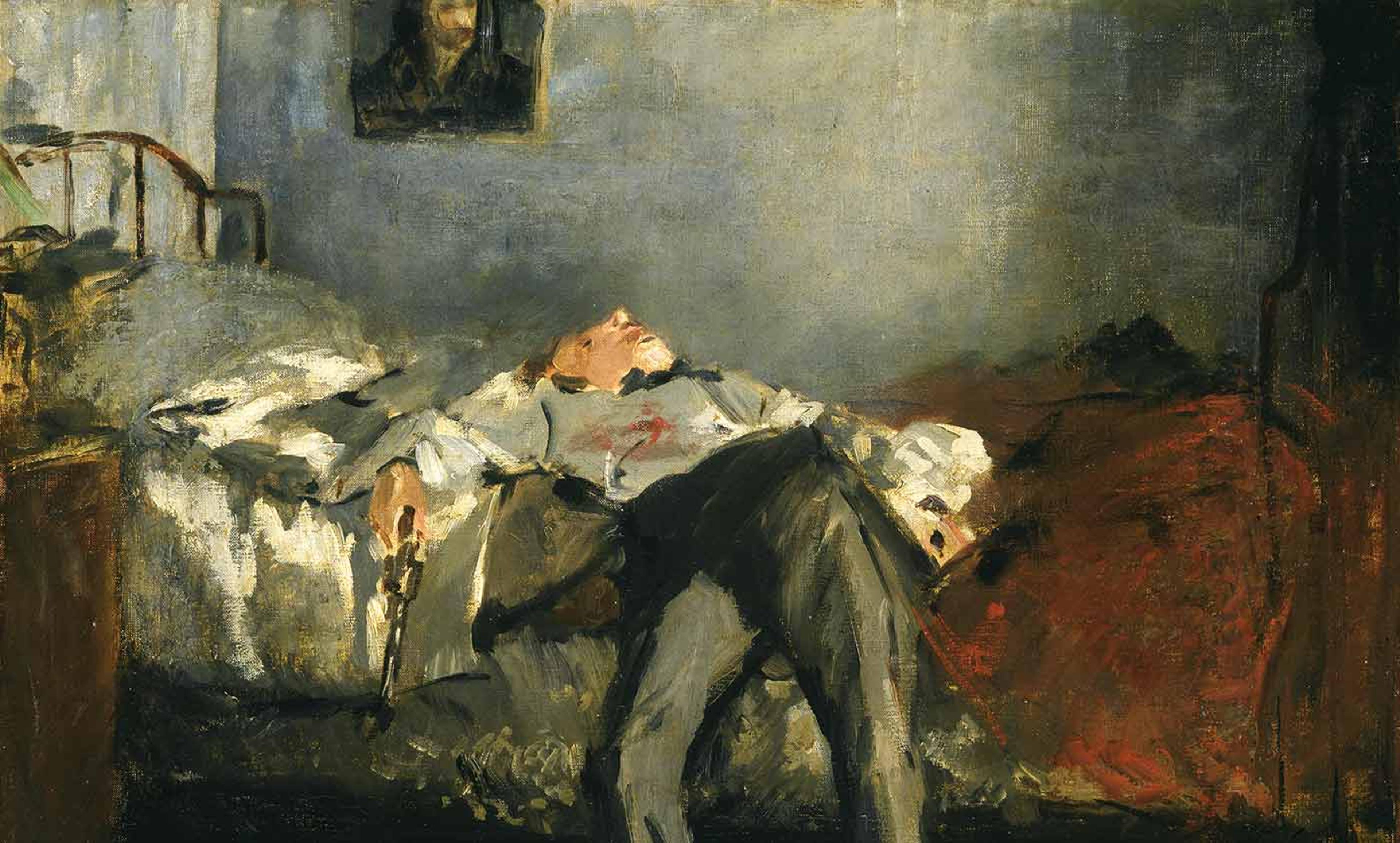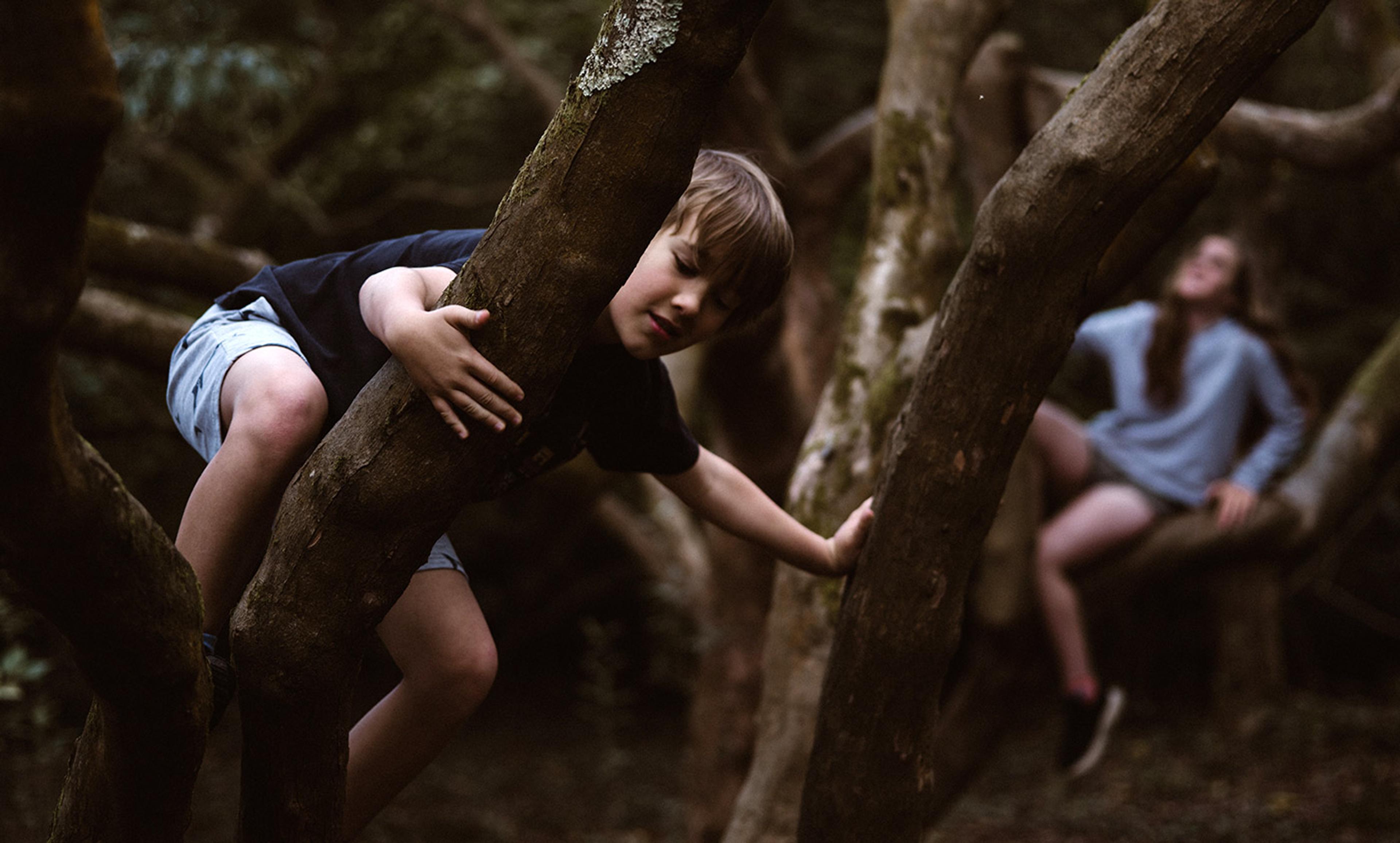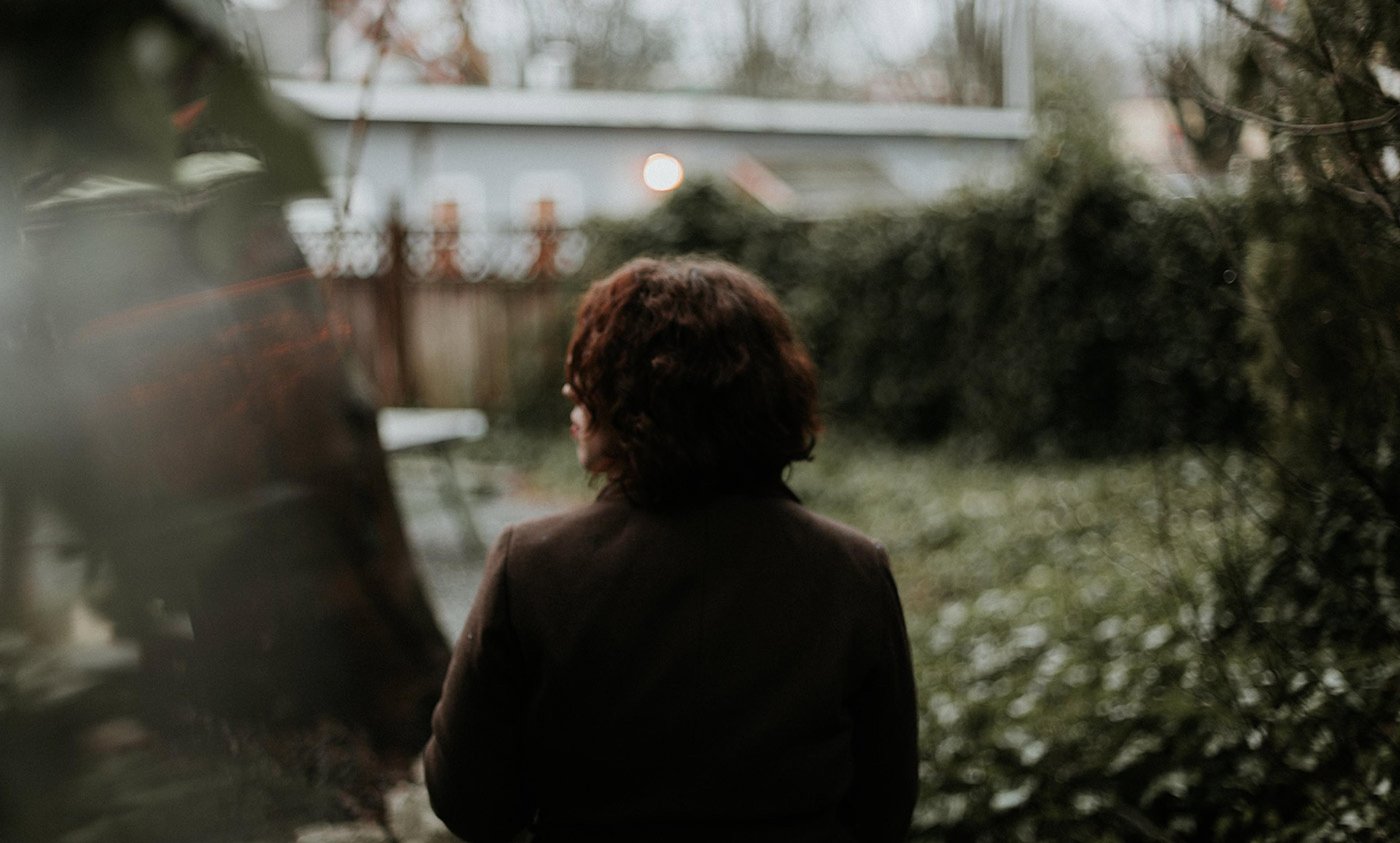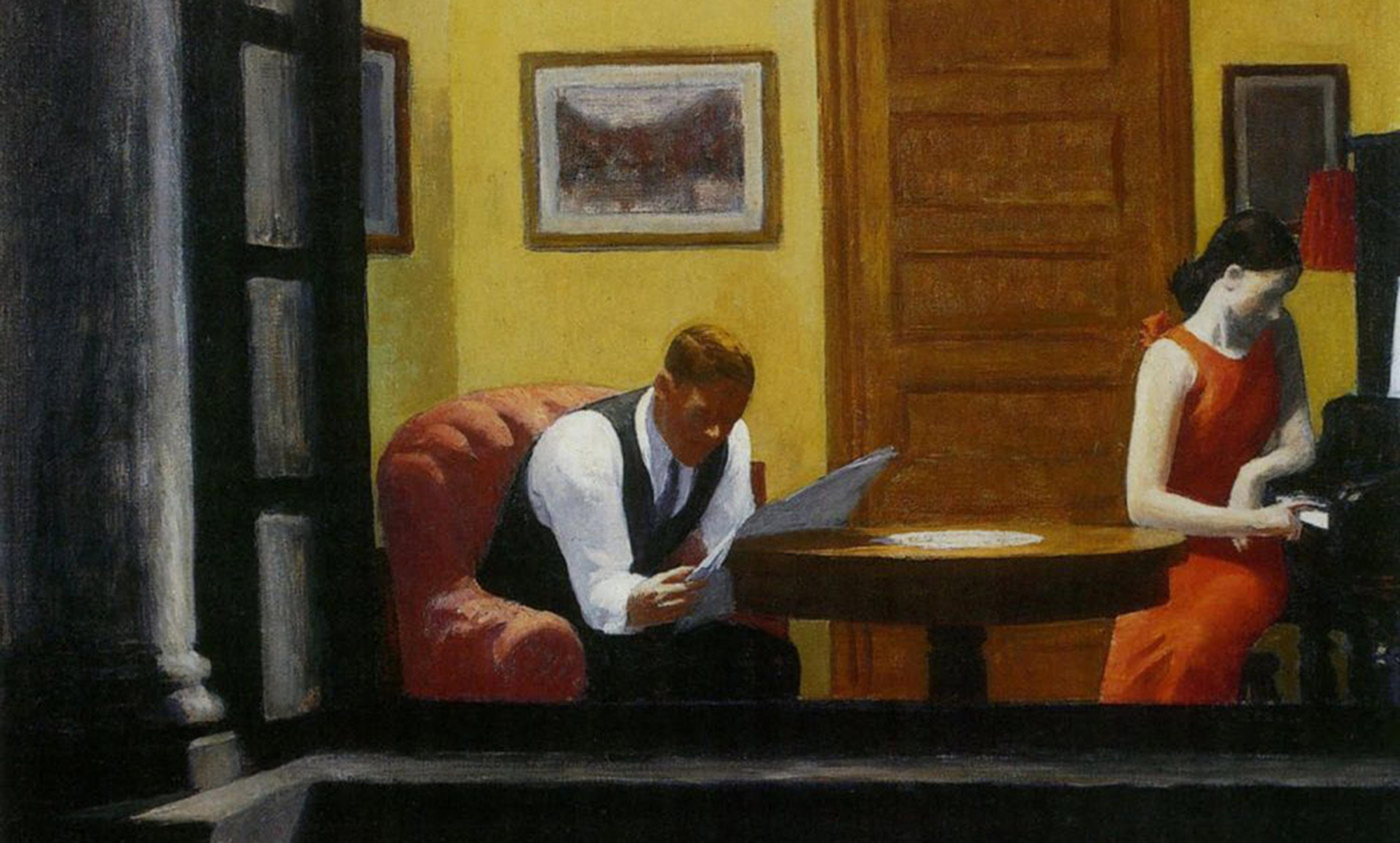
Detail of The Suicide (c1877), by Edouard Manet. Courtesy of the Emil Bührle Collection/Zurich
Like all living things, humans are organisms, biological entities that function as physiological aggregates whose constituent parts operate with a high degree of cooperation and a low degree of conflict. But unlike other organisms, humans possess a rogue component – a brain network that can, at will, choose to defect and undermine the survival mission and purpose of the rest of the body. This is the network that underlies human consciousness, and especially our capacity for autonoetic, or reflective, self-awareness, the basis of the conceptions that underlie our greatest achievements as a species – art, music, architecture, literature, science – and our ability to appreciate them.
The autonoetically conscious human brain is the only entity in the history of life that has ever been able to choose, at will, to terminate his or her own existence, or even put the organism’s physical existence at risk for the thrill of simply doing so – the other cells and systems be damned. Some argue, on the basis of anecdotal evidence, that some other animals also commit suicide. But whether such behaviours are truly intentional, in the sense of being based on a thought about causing one’s self to cease to exist, is controversial. In the late-19th century, the sociologist Émile Durkheim proposed that the term ‘suicide’ should be used only in cases of death resulting directly or indirectly from a positive or negative act that the individual knows or believes will produce the intended result – death. Durkheim argued that conceiving a goal of this kind depends on possession of a reflective form of consciousness that other animals lack – that the physiological capacities they possess are insufficient to this purpose. He concluded that true suicide, in its various forms, is a social condition of humans.
Early humans are believed to have been unremarkable compared with coexisting fauna. Then, at some point (estimates range between 50,000 and 200,000 years ago), something happened to distinguish our ancestors from the rest of the animal kingdom. They developed novel capacities and ways of existing and interacting with one another – language; complex hierarchical relational reasoning; representation of self versus other; mental time-travel. Autonoetic consciousness, the human ability to know about our own existence, was the result.
That autonoesis might be unique to humans does not mean that it appeared out of the blue. For one thing, our primate ancestors had sophisticated cognitive capacities, including working memory and executive functions. These made possible the integration of perceptual and mnemonic information in real time, and the ability to deliberate about alternative courses of action. Such capacities are known to depend on networks involving lateral areas of prefrontal cortex. This is important because both human and nonhuman primates possess these areas, but other mammals do not. Perhaps these networks allowed ancestral primates to have a noetic (factual or semantic) consciousness of objects and events, including the ability to distinguish between what is useful and what is harmful, and maybe even to have a simple semantic version of self-awareness. But they would not have been able to experience their self as an entity with a personal past, and imagine possible futures, including the existential realisation of future nonexistence. This capacity for autonoesis, I propose, depended on the emergence of unique, enriched features of prefrontal networks that humans are known to possess, but that even other primates lack.
Given that autonoetic consciousness can undermine the survival goals of the organism, it must have had useful consequences. Perhaps it enabled the ability to have a self-focused perspective on the value of objects and events to the individual – to the self. Without the involvement of one’s subjective self, what we humans call emotions cannot be experienced. Other animals might have some kinds of emotional experiences in significant situations in their lives, but without autonoesis they cannot have the kinds of experiences we do.
The personal, self-centred nature of the autonoetic mind leads it to assume that it is always in charge of its body’s actions. Indeed, so-called free will is one of our most cherished narratives. For example, Judeo-Christian religions teach that humans attain heaven in the afterlife through their choices in life. René Descartes’s dualistic philosophy was an attempt to reconcile such religious conceptions in light of the scientific revolution begun by Copernicus and Galileo. The philosopher Søren Kierkegaard later proposed that anxiety is the price we pay for this freedom to choose. While some movements in modern science – behaviourism being a prime example – have attempted to suppress consciousness as a scientific construct, consciousness itself did not let that rejection stand. Today, the science of consciousness is a vibrant field.
T he kind of consciousness supported by our unique kind of brain has enabled us to conquer frontiers. We have the power to change the environment to meet our needs; satisfy our whims, desires and fantasies; and protect ourselves from our fears and anxieties. Imagining the unknown inspires us to find new ways of existing. Pursuing these comes with risks, but we can also anticipate them and conceive of possible solutions in advance.
Our thirst for knowledge has led to scientific and technological discoveries that have made life, at least for the lucky among us, easier in many ways. We don’t have to forage for food or drink in dangerous settings – attacks by other species, which are so common in the animal kingdom, are simply not part of daily life for most humans. Food is kept fresh by refrigeration. We easily combat seasonal changes in temperature with other convenient appliances. We have access to medications to treat, and even prevent, common illnesses, and surgical procedures can fix and, in some cases, replace damaged body parts. We can electronically communicate with people anywhere in the world instantaneously.
The internet has indeed transformed life in ways worth celebrating but, like most good things, it comes at a cost. It has made it easier to be self-centred, facilitating realignments of interests that oppose the common good and challenge commonly accepted beliefs through hearsay and rumour, and even outright lies. False assertions gain credence simply through rapid repetition. Some use such tactics to undermine the value of science and its contributions to life and wellbeing, and to attack the foundations of our social structures, including our government, and its safety nets for those in need, and its checks and balances against tyranny.
The pace of change to our ecosystem has become fast and furious. Global temperatures and sea levels are rising. Weather patterns are in flux. Forests are burning. Deserts are expanding. Species are becoming extinct at unprecedented rates. Many alarmed observers have called for efforts to reverse, or at least slow, changes brought on by our choices. According to the astrophysicist Adam Frank, the Earth will surely persist in some form, but it is likely that some of the life forms present today will not make it. History tells us that large organisms with energy-demanding lifestyles are especially vulnerable to environmental reconfigurations. Never, in the history of life, has any species asked more of the environment than we have.
Pondering such issues, the philosopher Todd May recently asked: ‘Would human extinction be a tragedy?’ He concluded that the planet might well be better off without us, but that such an outcome would indeed be a tragedy, as we have achieved remarkable things as a species. Autonoesis, I contend, has made these possible. But it also has a dark side. With self-consciousness comes selfishness, and narcissism, enabling our most troubling and base dispositions towards others – distrust, fear, hate, greed and avarice. According to the philosopher Christophe Menant, it is the root of evil.
Yet only self-conscious minds can come to the realisation, as May’s mind did, that we have an obligation to confront our selfish nature for the good of humankind, as a whole. To act on this will require a global effort. If we succeed in joining together to rise above short-sighted policies and self-indulgent desires we might avert some of the more drastic changes in the configuration of life, and preserve some kind of future for our descendants.
We persist as individuals only if we persist as a species. We don’t have time for biological evolution to come to the rescue – it’s too slow a process. We have to depend on more rapid avenues of change – cognitive and cultural evolution – which, in turn, depend on our autonoetic minds. In the end, whether humans will be part of the Earth’s future is up to us – to the choices our self-conscious minds make.
This is an edited extract from ‘The Deep History of Ourselves’ by Joseph LeDoux, published by Viking, an imprint of Penguin Publishing Group, a division of Penguin Random House, LLC. Copyright © 2019 by Joseph LeDoux.





